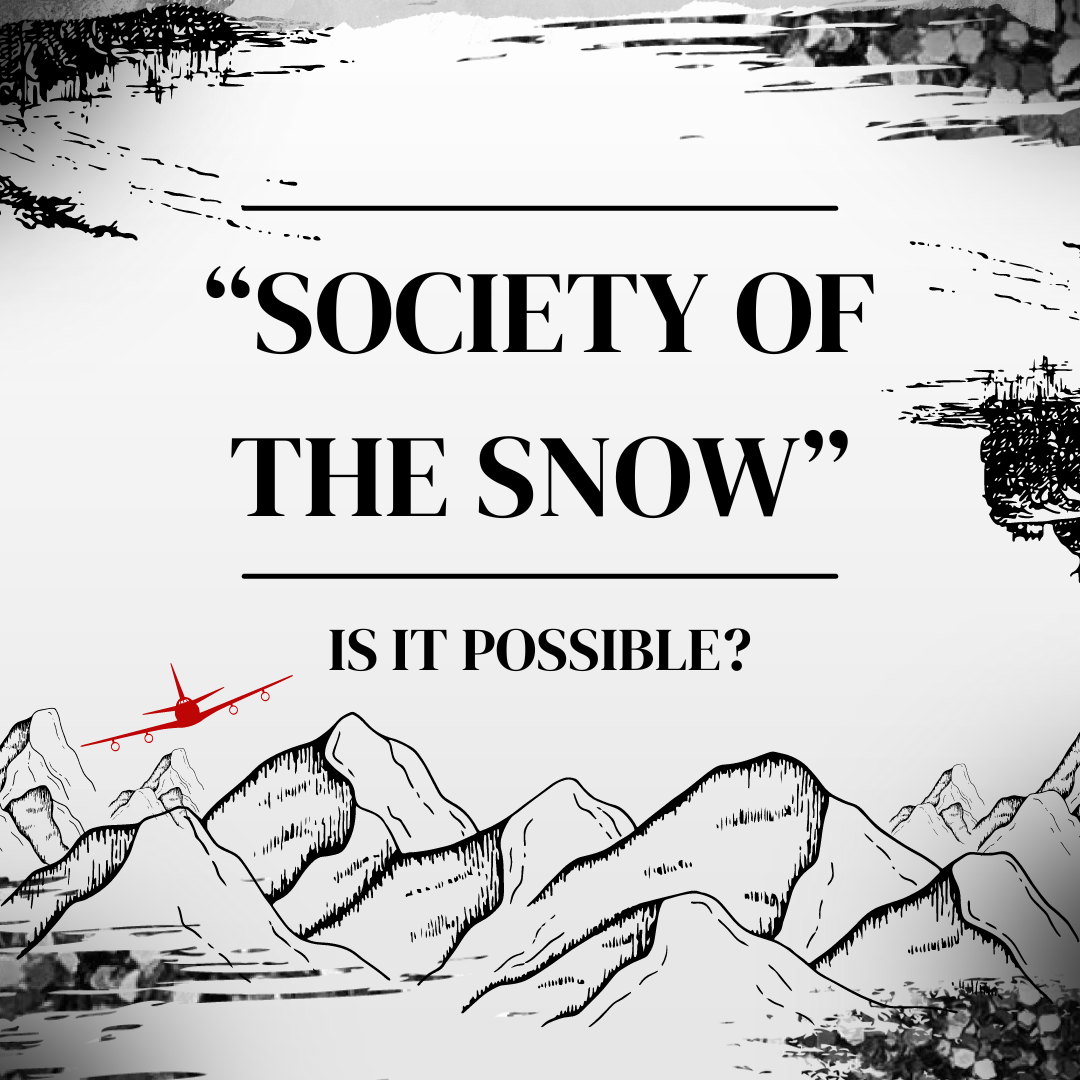The For You Page is buzzing with commentary on J.A. Bayona’s Spanish Survival Thriller “La Sociedad de la Nieve”, (“Society of the Snow”).
The film tells the story of the 1972 Uruguayan flight disaster on the frozen heart of the Andes mountains. Forty five passengers embarked on the trip where only 16 survived after 72 long and treacherous days without rescue. Weeks endured with unhealed injuries, failed rescue attempts, and prolonged starvation led to eventual cannibalism upon the lifeless bodies.
Fans, predominantly in Latinx communities, have flooded social media with videos ranging from cast member heart-throb edits, to gut-wrenching montages highlighting the devastating effects of the accident.
In fact, 19 passengers consisted of an Uruguayan amateur Rugby team, ranging from ages 18-25. Considering the amount of edits and social media posts, I’d presumed most derived from people in the same age demographic. Still, there’ve been plenty of disaster movies made in our time; what has drawn people to join the TikTok exchange now?
I asked film studies major Mauricio Guillen about his thoughts on what drives the TikTok conversation. Guillen and I spoke of the two rugby players who took a 10-day hiking trip to find help, leading to the rescue of the rest of the passengers on the crash site.
“The airplane is usually symbolic to contemporary society…the ultimate defiance against the laws of physics and nature…” He takes an interesting approach, encompassing both the real life event and the artistic symbolism in film, “It then helps to serve as a reminder to young adults that the burden of carrying the world’s problems by the shoulder is a shared one…” Guillen said.
There’s substance to Guillen’s thoughtful analysis. In this setting, where these young men were the most fit and able to help the injured, there is a heavy reliance on them to survive.
Guillen told me that his mother had seen the film. I inquired about what the connection might be between this film and older generations.
“I feel…living is similar to surviving….it’s a communal effort between generations to get individuals where they currently are,” said Guillen. .
Today’s society serves as a reminder of the divide between countries through war, politics, and ideologies. Young adults today can relate to the entrapment of a situation where they have little control. What else, I wondered, can be subconsciously tugging away at the heart-strings of Society of the Snow fans?
Student, Valeria Gudino, told me, in disbelief, how she felt the film was “Really raw and human.” I sensed an evident interest in her as we spoke. She exchanged a series of animated hand gestures, trying to comprehend how survival in this situation is possible.
“There’s a connection between being young and healthier,” said Gudino. She elaborates, in awe of the resilience the young men had, witnessing team members and strangers alike die before their eyes. “It just kept getting worse..it’s very intense and emotional.”
College students can identify with the sense of helplessness and confusion in stepping up to the very real-world responsibilities of adulthood and societal pressures alike. This story serves as a reminder that their success can very much be limited to their own efforts. In Guillen’s words, “To keep hope is always harder than giving in to despair.” for Gudino, “Humanity prevails.”


Comments are closed, but trackbacks and pingbacks are open.